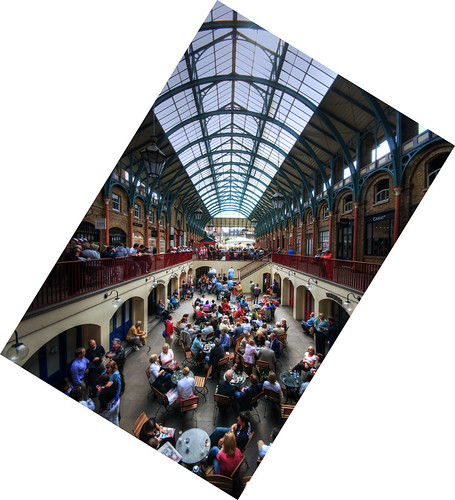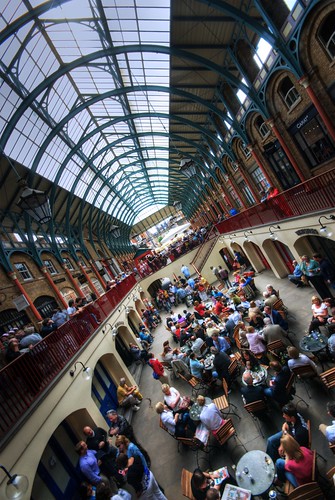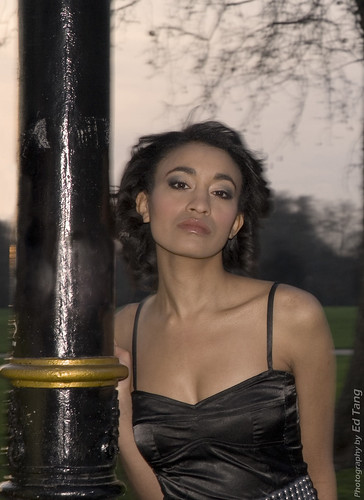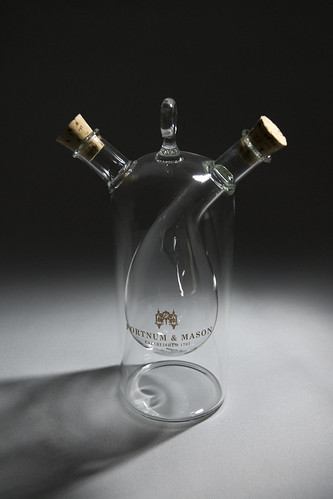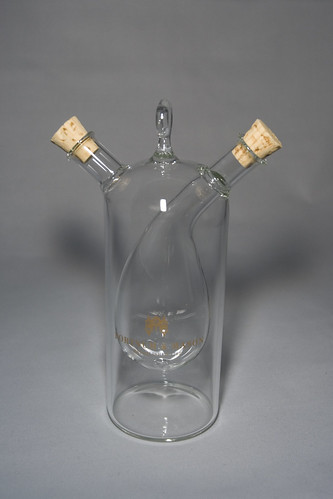
Okay, I'm writing this out-of-sequence. This will be the second part in a series on how to use flash more effectively in your photography. We'll be looking at off-camera flash. Why is off-camera flash "better" than being on-camera? The answer will become apparent here.
I use a Nikon system, primarily because of the Creative Lighting System (CLS) that they offer. Being able to trigger flashguns wirelessly off-camera is a valuable tool. The alternative to using a wireless system is through a sync cable, which is what I've done here for this tutorial. I've also included the use of one of my more commonly used flash brackets - the Custom Brackets CB Mini-RC (illustrated on the left). I'll talk a little more about this bit of kit later on.
Before we begin off-camera flash work, let's quickly review four on-camera methods as our reference points.
All images were taken handheld with a D200 with a Nikon Speedlight, Auto white balance, 1/60, f/5.6, iTTL mode, 0 comp, with Auto FP High Speed Sync on.
1. Direct flash. Pointing the flash at the subject is the most simple way that flash can be used.
As you can see there is a harsh shadow floating behind the cruet. The flash was sitting directly on the flash hotshoe, and therefore the shadow is cast towards the far right once the camera is turned to a portrait orientation.
 2. Bounce at 45 degrees.
2. Bounce at 45 degrees. The flashgun head is tilted at an angle of 45 degrees from the plane of the lens, and so light is not pointed at the subject.
This time you can see that the shadow is a little less harsh, and light is visible in the top left of the frame. Again this is because of the flashgun sitting directly on the top of the hotshoe on the camera. We'll try one more bounce, but to get rid of that uneven light distribution, I'll be using a rubber band a white index card.
 3. Bounce at 60 degrees and a classic index bounce card.
3. Bounce at 60 degrees and a classic index bounce card.There's a difference here. The card was placed on the top of the flash head, so that when in portrait orientation, it will push light back towards the right. And we can see evidence of that here. The balance of the light is still not perfect, but where the light is falling on the white background is more to the right and away from the top left corner than in the previous example. The light is also more evenly pushed and the image is brighter. And we've got a soft shadow...
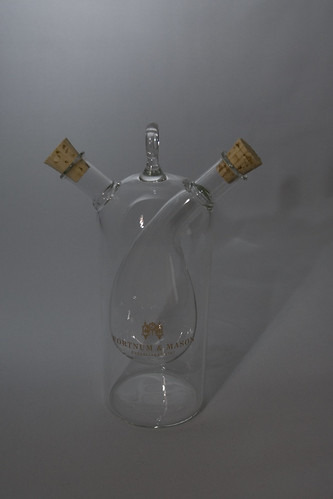 4. Direct flash and Stofen Omnibounce.
4. Direct flash and Stofen Omnibounce.The Omnibounce is a popular diffuser amongst photojournalists because it's compact, and is effective. It is recommended that you bounce using the Omnibounce, but here I've decided to use it direct so you can compare it with the direct flash (smaller pic below as a reminder), you can see that the shadow is softer with the diffuser. The image is also brighter as light is being spread out more.

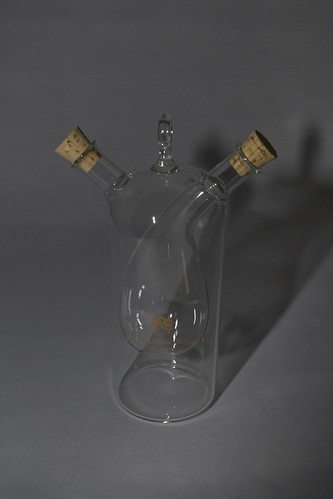
Now that we have our references, let's see what I can conjure up with the flash on a sync cord.
5. Off-camera: Flashgun to left of camera, lens height.
There's instantly a dramatic change in lighting. The flash is highlighting specific areas of the cruet that adds dynamism to the image. The shadow from the cruet gives us a clue that the flash is indeed on the left of the camera.
 6. Off-camera: Flashgun to below camera right.
6. Off-camera: Flashgun to below camera right.
The last image was taken on the left at the height of the lens. I've now swapped the flash over to the right and instead on being the same height as the lens, it's now below.
So what are the differences? Well the cork stops are no longer highlighted by the flash and the shadow is harsher.

Let's try the same from above the lens height.
7. Off-camera: Flashgun to above camera right.
The cork stops are now well lit. Because the flash is aimed down, the light on the surface is more intense than the flash pointed up, as in example 6.
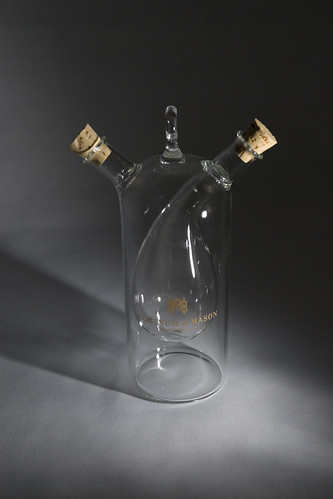 8. Off-camera: Flashgun directly below camera.
8. Off-camera: Flashgun directly below camera.Rather than a flash on camera left or right, how about directly below? There's no point in directly above - that's where the hotshoe sits.
Because the flash is below and pointed slightly up and direct, there is no light cast on the surface (and therefore no shadow!) Instead it intensely lights the front of the cruet.
9. Off-camera: Flashgun front right camera.One of my more favourite approaches though is to move the flash into an opposite direction to the camera. This illustrates a flashlight to the far right and in front of the camera. The shadow again gives us the clue that the light is indeed coming from that direction.
10. Off-camera: CB Mini-RC, direct flash. The final example is with one of my off-camera brackets: the CB mini-RC. It's fantastic for portrait-orientated flash photography as it pushes the flashgun back above the lens, rather than being on one side if it were on the hotshoe.
With direct flash the shadow is now placed behind the cruet, rather than to one side.
This illustrates some common off-camera flash configurations, but when should a certain technique be used? That's a tricky question as it depends on your subject, what you want to highlight, and how your ambient light is. I'd neglect ambient light for the time being, and would rather discuss subject and highlights.
Let's take the cruet as our subject. If I wanted to highlight the logo printed on the front, then a standard direct flash wouldn't be useful as it will bring reflections. So what are the options? We can backlight as in 9, or have a very intense light from a direct flash below the camera. So these would be the options I'd limit myself to in order to highlight the logo.
Another example - we would like a soft shadow. That leaves us with bouncing, direct flash with off-camera bracket, the omnibounce or a direct flash below camera.
So if we think of a portrait, rather than the cruet, if we wanted a soft shadow, we can directly pinch ideas just mentioned. If we wanted to highlight the hair, then we can imagine that we're lighting the cruet's corks. So we could be looking for the flash to be placed higher and to one side, for instance.
And this is how I approach off-camera lighting.
